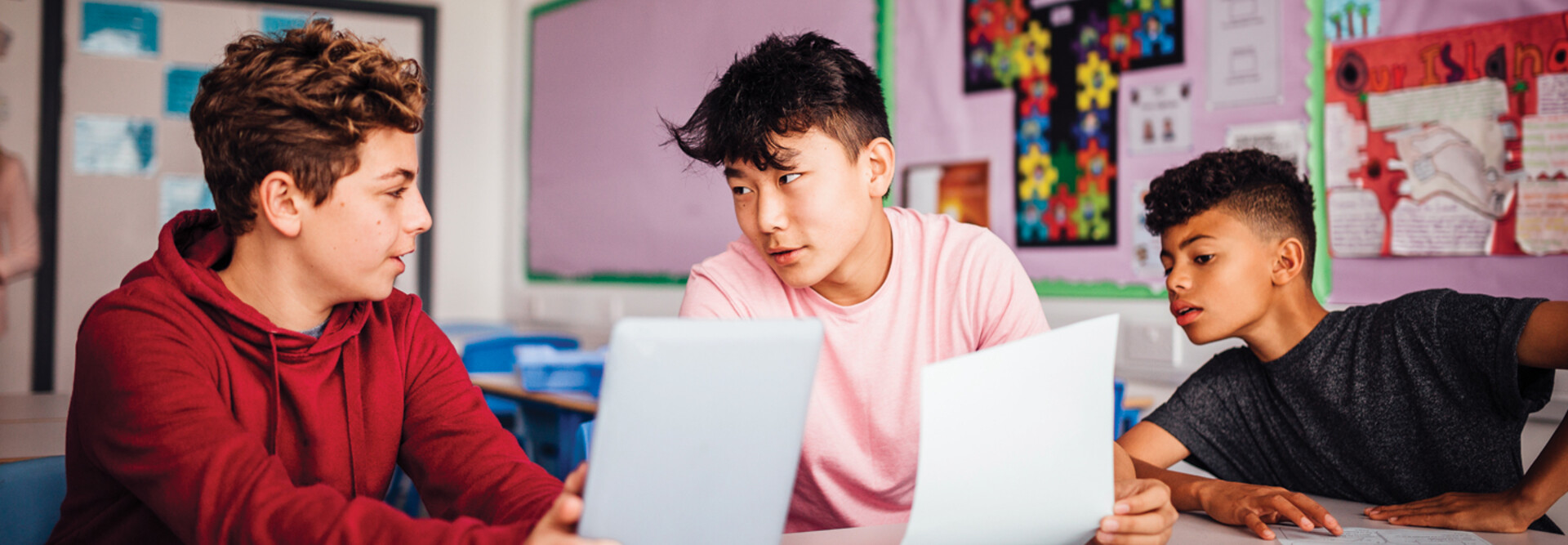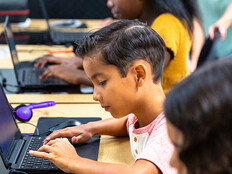“Digital citizenship is really empowering young people to think critically about their digital lives and participate in safe, healthy and responsible ways,” Buch says.
Common Sense Media’s digital citizenship curriculum addresses these topics:
- Media balance and well-being
- Privacy and safety
- Digital footprint and identity
- Relationships and communication
- Cyberbullying, digital drama and hate speech
- News and media literacy
The program is free for schools, and teacher-facing content includes slides, handouts and lesson quizzes, according to Buch. Common Sense Media’s curriculum aims to show students that technology can be both helpful and harmful.
“We don’t want to come at it from a fear-based approach,” Buch says. That means not taking an adversarial approach such as phone bans, Buch says, because students often do not understand the reasoning.
How K–12 Schools Approach Teaching Digital Citizenship to Students
Orange Unified School District in Orange County, Calif., has adopted the Common Sense Media digital citizenship curriculum, which includes lessons on how to achieve media balance and how students can track their digital trails.
These lessons cover digital identity as well as online safety and security, including protecting your passwords, says Randy Kolset, administrator of educational technology at Orange USD. The district teaches two lessons per grade level and tries to avoid repeating them as students get into the higher grades.
Like Orange USD, Atlanta Public Schools also uses the Common Sense Media curriculum to teach students about responsible behavior online. Ed tech specialists in the district organize digital citizenship programs according to grade. They feature a deeper dive in the higher grades, says Jennifer Hall, digital learning specialist at Atlanta Public Schools and a 2022 EdTech influencer.
Digital citizenship lessons are spread across multiple subjects, such as social studies and math, just as writing occurs across multiple classes, Hall explains. Students learn how to check misinformation online and use digital tools effectively. Young kids are taught that passwords are private, she says.
DIVE DEEPER: Identity management makes schools less vulnerable to cybercrime.
Orange USD also uses a Google digital citizenship tool called Be Internet Awesome, which teaches students about online safety.
For an added layer of protection, the district uses a tool that allows teachers to monitor where students are online.
“We want to guide them toward a lesson and help teach them, as opposed to catching them doing something nefarious,” Kolset says.
Schools Contend With Digital Citizenship for AI
Since students are digital natives and have not known a world without smartphones, the school teaches them how to use these tools safely. Hall says the “new frontier” of digital citizenship is teaching kids how to use “AI for good.”
Orange USD also now incorporates AI into a lesson on how to use tools ethically, Kolset says.
“That’s definitely the next step in understanding what digital citizenship is and using technology appropriately,” Hall says. She notes that AI tools are important for students to learn because they will need them when they enter the workforce. “We want to make sure they’re using them the right way.”














